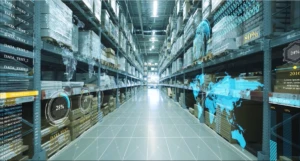
Audience type: Supply chain


Strike a strategic inventory balance in your supply chain with demand driven material requirements planning (DDMRP)
Today we are excited to announce the preview of our demand driven material requirements planning (DDMRP) feature for Microsoft Dynamics 365 Supply Chain Management. The evolution of MRP DDMRP is the next evolution of material requirements planning (MRP), which has a long and storied history in manufacturing.
Delivering a seamless commerce experience: Unlocking omnichannel retailing with intelligent order management
The momentum of e-commerce continues. In fact, McKinsey & Company has stated that e-commerce shopping has 30 percent higher penetration than pre-COVID-19 pandemic, and that this pandemic has also accelerated e-commerce growth by five years.1 The COVID-19 pandemic certainly explains part of the growth in the demand, but it is not the whole story.
Microsoft Dynamics 365 at Gartner Supply Chain Symposium Xpo™ 2022
Although the pandemic exposed our supply chain fragilities, there are other factors that will continue to disrupt our supply chains for the foreseeable future.
Microsoft Dynamics 365 at Hannover Messe 2022
We are excited to return to Hannover Messe in person this year between May 30, 2022 and June 2, 2022. The pandemic has been difficult for most manufacturers, and there are still many lingering challenges—yet, manufacturers are intent on digital transformation to drive resilience.
Microsoft fuels digital transformation of supply chains for a resilient and sustainable future
We are excited to share two new investments in Microsoft Dynamics 365 supply chain portfolio that we are launching in preview. We had announced a partnership between FedEx and Microsoft, in January of 2022, to launch a cross-platform, logistics-as-a-service solution for brands. This partnership is now in preview.
How Dynamics 365 Mixed Reality on HoloLens 2 is accelerating ROI for the healthcare industry
Healthcare providers around the world are accelerating their digital journey and embracing secure solutions that empower health team collaboration and boost clinician productivity.
Dynamics 365 breathes composability into enterprise resource planning modernization
Retail executives have long understood the critical role that supply chain management plays in their organization’s ability to meet customer demand. Yet, as central as the supply chain is to success in most companies, customers rarely consider it when placing an order.
Watch how to improve on-the-job guidance with mixed reality
Traditional guidance or upskilling usually requires a trained trainer, a trainee, some mix of resources like work instructions, parts manuals, or checklists, and a real-world or simulated task to perform. In this scenario, a skilled worker (the trained trainer) guides the trainee through the job until they have mastered the process and can work alone.
3 key considerations when choosing an order management system
The COVID-19 pandemic has pushed “order management” from the backend of logistics operations to the spotlight of supply chain and commerce strategies. Retailers, consumer package goods (CPG) companies, and distributors rushed to adapt their business models to fulfill the explosive growth of online orders through different digital channels.
Manufacturers are mitigating disruptions with HoloLens 2 and Dynamics 365 mixed reality solutions
The challenges of the past few years have highlighted that no business is immune to sudden changes. Embracing mixed reality as a strategic initiative is key to ensuring business continuity and solidifying future stability and resiliency.
